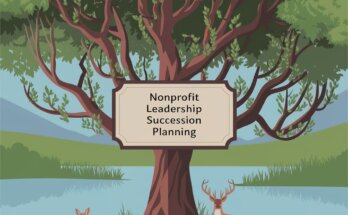In today’s rapidly changing environment, strategic thinking for nonprofit leaders is more crucial than ever.
Nonprofit organizations operate in a unique space, facing challenges such as limited resources, increasing competition for funding, and the need to adapt to the changing needs of their communities.
Understanding Strategic Thinking
Strategic thinking is the process of planning for the future by analyzing current trends, assessing potential risks, and identifying opportunities for growth.
It’s about stepping back and considering the bigger picture, which can be challenging in the day-to-day operations of running a nonprofit. However, embracing a strategic mindset is essential for making informed decisions that align with your mission.
Why is Strategic Thinking Essential for Nonprofits?
- Navigating Challenges: Nonprofits face a myriad of challenges, from funding cuts to changing regulations. Strategic thinking helps leaders anticipate these challenges and prepare accordingly.
- Enhancing Impact: By thinking strategically, nonprofits can better align their resources with their mission, ensuring they are making the most significant possible impact.
- Building Resilience: A strategic approach enables organizations to adapt to changes in their environment, ensuring sustainability and long-term success.
- Encouraging Innovation: Strategic thinking fosters a culture of innovation, encouraging nonprofits to explore new ideas and approaches to their work.
Strategy 1: Develop a Clear Vision and Mission
The foundation of strategic thinking lies in having a clear vision and mission statement. These statements guide your organization’s actions and decisions, providing a roadmap for success.
How to Apply This Strategy
- Craft Your Vision Statement: A vision statement describes what your organization aspires to achieve in the future. For example, if your nonprofit focuses on environmental conservation, your vision might be, “A sustainable world where all communities thrive in harmony with nature.”
- Define Your Mission Statement: This statement articulates your organization’s purpose and primary objectives. For instance, “Our mission is to protect natural habitats and promote sustainable practices through community education and engagement.”
- Communicate: Ensure that all stakeholders, including staff, volunteers, and donors, understand and can articulate your vision and mission.
Example in Action
Habitat for Humanity exemplifies this strategy. Their mission is clear: to build affordable housing for those in need. Their vision of a world where everyone has a decent place to live drives their actions and inspires their supporters.
Interactive Element: Vision and Mission Exercise
Take a moment to write down your organization’s vision and mission statements. Share them in the comments below, and let’s discuss how they align with your strategic goals!
Strategy 2: Conduct a SWOT Analysis
A SWOT analysis (Strengths, Weaknesses, Opportunities, Threats) is a powerful tool that helps organizations understand their internal and external environments. This analysis is essential for strategic planning.
How to Apply This Strategy
- Gather Your Team: Involve board members, staff, and volunteers in the process to gain diverse perspectives.
- Identify Strengths: List what your organization does well. This could be a strong volunteer base, effective programs, or unique partnerships.
- Recognize Weaknesses: Acknowledge areas that need improvement, such as limited funding or lack of community awareness.
- Explore Opportunities: Look for external factors that could benefit your organization, like new grant opportunities or community needs.
- Assess Threats: Identify external challenges that could impact your work, such as changing regulations or increased competition for funding.
Example in Action
A local nonprofit focused on youth mentorship conducted a SWOT analysis and discovered their strong community engagement (strength) but noted a lack of funding (weakness).
They identified an opportunity to collaborate with local schools to offer mentorship programs, which would not only enhance their visibility, but also attract potential donors interested in supporting educational initiatives.
Strategy 3: Set SMART Objectives
Setting SMART objectives is crucial for effective strategic planning. SMART stands for Specific, Measurable, Achievable, Relevant, and Time-bound. These criteria ensure that your goals are clear and reachable.
How to Apply This Strategy
- Specific: Clearly define the objective. Instead of saying, “We want to raise money,” say, “We aim to raise $50,000 for our scholarship program.”
- Measurable: Determine how you will measure success. In the previous example, tracking the funds raised is measurable.
- Achievable: Set realistic objectives based on your organization’s resources and capabilities. For example, consider previous fundraising efforts to gauge what’s feasible.
- Relevant: Ensure that your objectives align with your mission and vision. If your mission focuses on education, your objectives should directly support educational initiatives.
- Time-bound: Set a deadline for achieving the objective. For instance, “We will raise $50,000 by June 30th.”
Example in Action
Big Brothers Big Sisters set a SMART objective to match 100 new mentors with youth in their community within one year.
They measured success through the number of matches made each month, adjusted their recruitment strategies as needed, and ultimately exceeded their goal by fostering strong community partnerships.
SMART Objectives Worksheet
Download our SMART Objectives Worksheet to help you set your organization’s objectives. Share your objectives in the comments below for feedback and support from the community!
Strategy 4: Foster Collaboration and Partnerships
In the nonprofit sector, collaboration can amplify impact. Building partnerships with other organizations, businesses, and community stakeholders can lead to shared resources and enhanced visibility.
How to Apply This Strategy
- Identify Potential Partners: Look for organizations with similar missions or complementary services.
- Establish Relationships: Reach out and initiate conversations about potential collaboration.
- Create Joint Initiatives: Develop programs or events together, sharing resources and expertise.
- Evaluate Outcomes: After a collaboration, assess the impact and learn from the experience for future partnerships.
Example in Action
A nonprofit focused on health education partnered with local schools and healthcare providers to create a community wellness fair. By collaborating, they were able to reach more families and provide comprehensive health resources, demonstrating how partnerships can expand reach and effectiveness.
Strategy 5: Embrace Data-Driven Decision Making
Utilizing data is vital for understanding the impact of your organization’s work and making informed decisions.
How to Apply This Strategy
- Collect Data: Gather quantitative and qualitative data on your programs and initiatives. This could include surveys, program outcomes, and community feedback.
- Analyze Data: Use this data to identify trends, assess impact, and make adjustments to programs as needed.
- Share Findings: Communicate results to stakeholders, demonstrating transparency and accountability.
- Adjust Strategies: Use insights gained from the data to inform future planning and strategy development.
Example in Action
A nonprofit dedicated to mental health utilized pre- and post-program assessments to demonstrate the effectiveness of their counseling services. By analyzing the data, they identified specific areas for improvement, adjusted their program curriculum, and ultimately saw an increase in participant satisfaction and outcomes.
A Journey of Strategic Thinking
In a bustling city, a nonprofit called Hope and Healing was struggling to maintain its impact. They provided essential mental health services to the community, but funding was dwindling, and their programs were not reaching as many people as they hoped.
Recognizing the need for change, the executive director decided to engage in strategic thinking. They began by developing a clear vision and mission statement that resonated with the community. Their vision was “A community where mental health is prioritized and accessible to all,” and their mission was “To provide compassionate and affordable mental health services to individuals in need.”
With the help of volunteers, they conducted a SWOT analysis to understand their strengths and weaknesses. They identified their strong community relationships as a significant strength but noted their limited funding as a weakness.
To address these challenges, they set SMART objectives, aiming to secure $100,000 in grants within a year. They also fostered collaborations with local businesses, which resulted in joint fundraising events. By embracing data-driven decision-making, they tracked their progress and adjusted their strategies as needed.
As a result, Hope and Healing saw a significant increase in community support and funding. Their journey of strategic thinking not only transformed their organization but also revitalized their community, ensuring that mental health services were accessible to everyone who needed them.
Conclusion
Strategic thinking for nonprofit leaders is not just a concept; it’s a necessity in today’s ever-changing landscape.
We invite you to join our Nonprofit Navigators Newsletter for more expert tips, resources, and exclusive opportunities.
Subscribers gain access to job openings, grant funding alerts, webinars, and events designed to enhance your nonprofit’s success.
Don’t miss out on the tools and support available to help you thrive in your mission!
>>>>Additional Resources>>>>>
- The Small Business’s Guide to Winning Grants
- Request for Proposal Success: How to Write Proposals That Win
- The Ultimate Guide to Federal Grant Applications: Techniques for Success
- Digital Marketing for Nonprofits: A Comprehensive Guide to Boosting Your Impact Online
- Mastering Online Fundraising: A Nonprofit’s Guide to Digital Success




